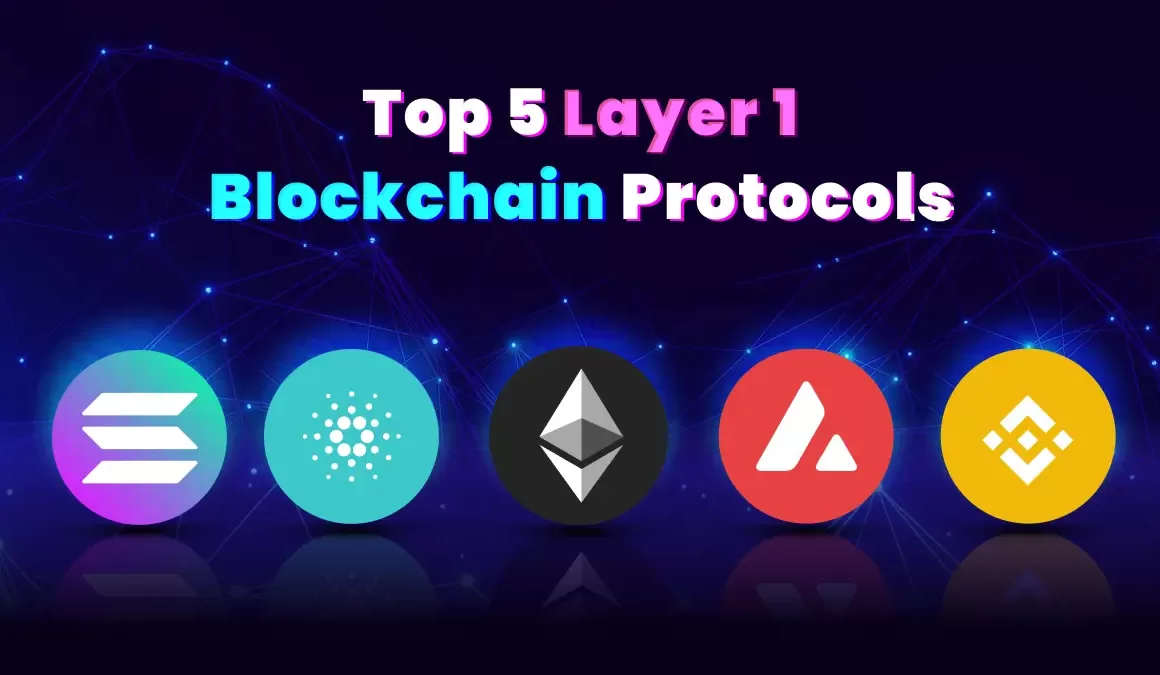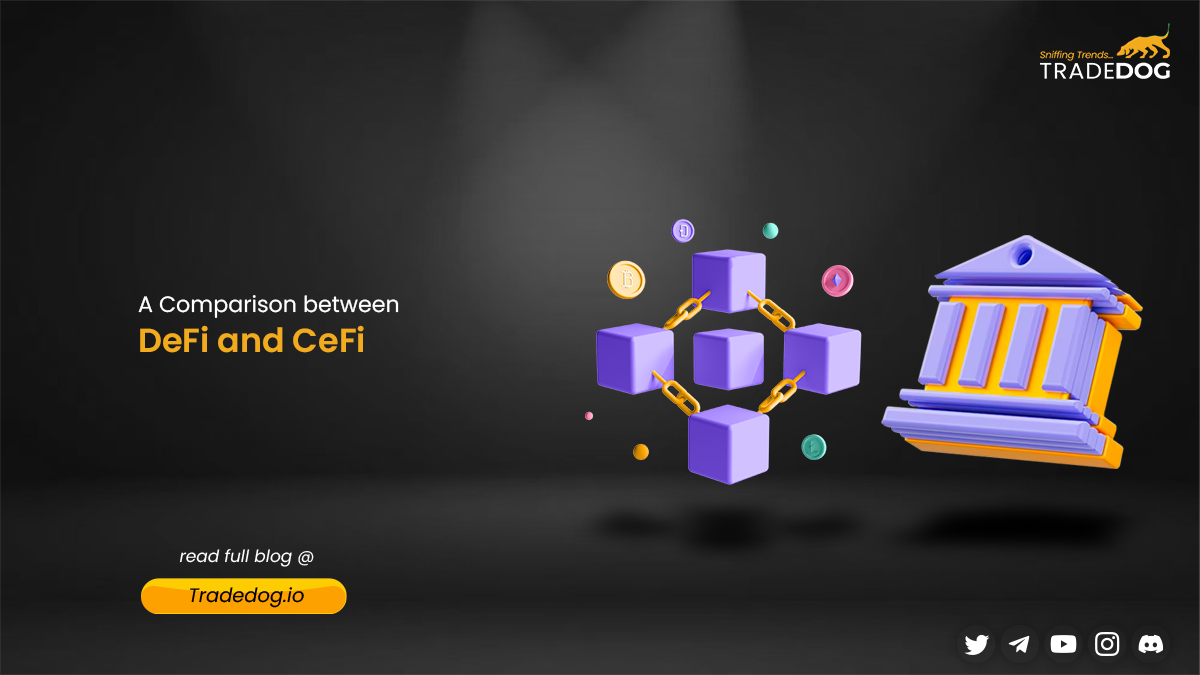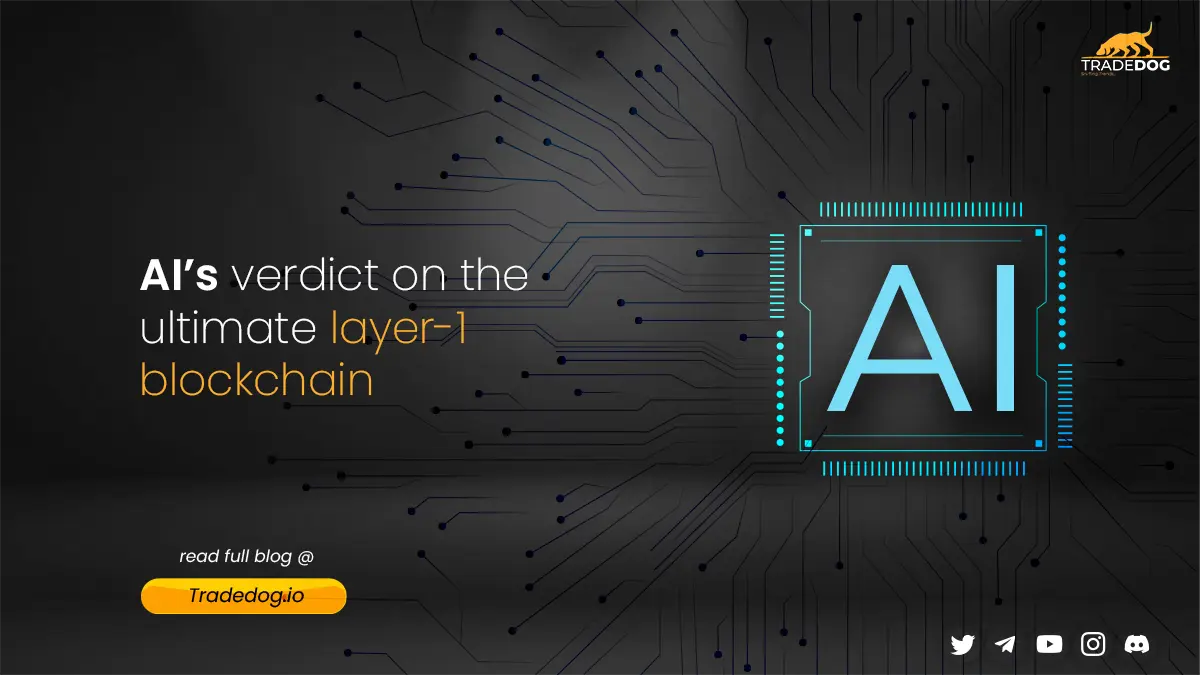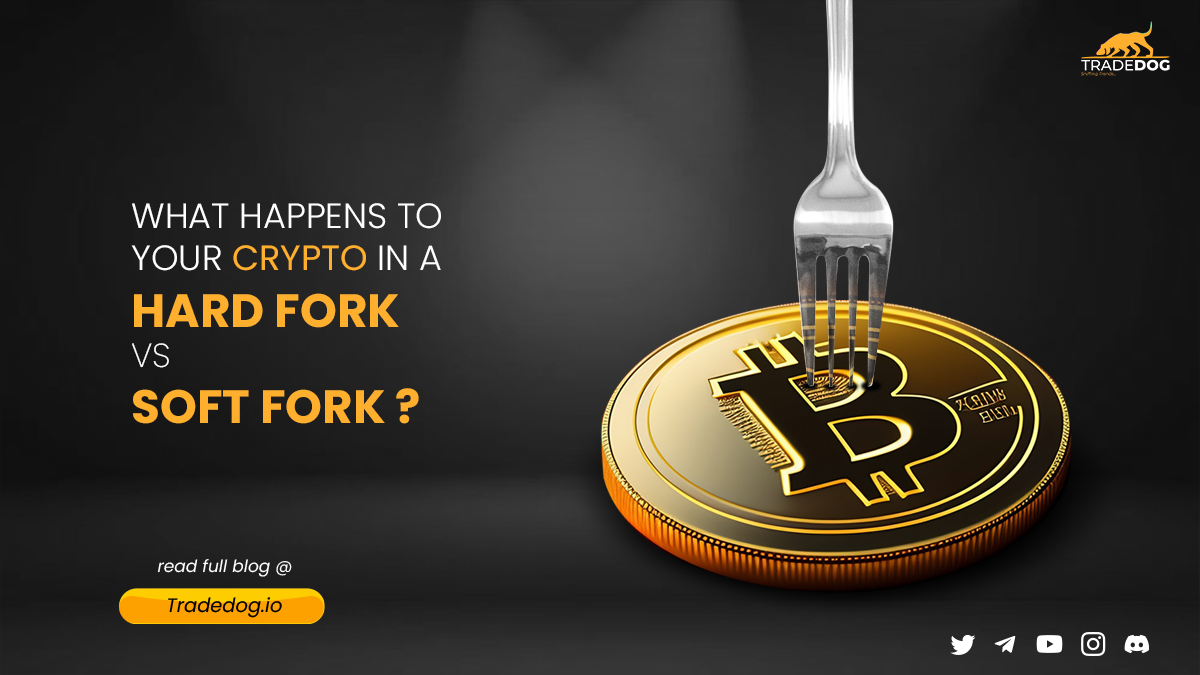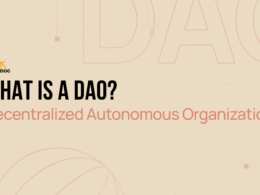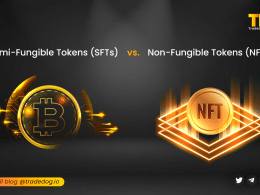Quick Links
Blockchain technology is changing the way businesses operate. But what many people don’t know is that blockchain technology has two layers: a foundational layer and an application layer. The foundational layer is the underlying blockchain network, while the application layer is the software that businesses use to interact with the blockchain. The foundational layer is important because it’s responsible for establishing trust and security, while the application layer can be customized to meet the needs of individual businesses. In this blog post, we’ll discuss the top 5 layer-1 protocols.
Ethereum
Ethereum is an open-source decentralized blockchain system with its own cryptocurrency, Ether. ETH serves as a platform for the execution of decentralized smart contracts as well as a platform for numerous other cryptocurrencies.
It has pioneered the concept of a blockchain smart contract platform. Smart contracts are computer programs that automatically execute the actions necessary to fulfill an agreement between several parties on the internet. They were designed to reduce the need for trusted intermediaries between contractors, thus reducing transaction costs while also increasing transaction reliability.
Ethereum’s smart contract platform has been layer 1 transaction-scalable from day one thanks to its use of sharding. In addition, Ethereum is the most widely used smart contract platform in the world and is supported by a large and active developer community. As a result, Ethereum is well-positioned to continue leading the way in blockchain smart contract innovation.
Binance Smart Chain (BNB)
Binance, which debuted in July 2017, is the world’s largest cryptocurrency exchange by daily trading volume. Binance aims to push cryptocurrency exchanges to the forefront of global financial activity. The concept behind the name Binance is to represent this new paradigm in global finance — Binary Finance, or Binance.
Binance is a layer 1 transaction scalability solution for the cryptocurrency industry. The company’s innovative Binance Chain platform provides near-instant transaction speeds and can process millions of transactions per second. In addition, Binance’s side organizations are attracting significant interest from both investors and users.
Measures like BEP-95 have upgraded the already deflationary tokenomics to make BNB even more deflationary. Following the proposal, gas fees on Binance Smart Chain have become even lower, as the network burns a part of the fees to decentralize further. The proposal was modeled after Ethereum’s famous EIP-1559. As a result, Binance is quickly becoming the go-to platform for those looking for a fast, reliable, and scalable layer 1 solution.
Cardano
Cardano is a proof-of-stake blockchain platform with the stated goal of empowering “changemakers, innovators, and visionaries” to effect positive global change. It is one of the layer 1 transaction scalability blockchains that has successfully used a proof-of-stake consensus mechanism. This consensus mechanism is known to be less energy intensive when compared to the proof-of-work algorithm which is relied upon by Bitcoin.
The team behind Cardano takes pride in ensuring that all technology developed goes through a process of peer-reviewed research. This means that bold ideas can be challenged and vetted before they are validated. According to the Cardano team, this academic rigor helps the blockchain be more durable and stable. This increases the chance that potential pitfalls can be anticipated and avoided altogether. Overall, the proof-of-stake consensus mechanism employed by Cardano makes it a more energy-efficient option in the layer 1 transaction scalability space.
Avalanche
Avalanche serves as a platform for decentralized applications and custom blockchain networks. It is one of Ethereum’s competitors, with the goal of dethroning Ethereum as the most popular blockchain for smart contracts. It intends to achieve this by having a higher transaction output of up to 6,500 transactions per second while maintaining scalability.
Any discussion of Avalanche must start with the blockchain trilemma, which posits that blockchains cannot achieve a sufficient degree of decentralization at scale. Achieving layer 1 transaction scalability has been a major challenge for blockchains, as decentralization often comes at the expense of performance. Ethereum, for instance, has suffered from high gas fees as a result of its decentralized design.
Avalanche seeks to solve this problem by dividing computing tasks among different blockchains. Private blockchains on the network could require its validators to be sufficiently geographically decentralized or comply with certain regulations. Following this modular structure, Avalanche improves its interoperability with other blockchains wishing to integrate with the Avalanche ecosystem.
Furthermore, the two different consensus mechanisms are designed with each blockchain’s requirements in mind, further improving their efficiency. In this way, Avalanche is working to solve the blockchain trilemma and improve layer 1 transaction scalability without compromising on decentralization.
Tezos
Tezos is a blockchain network that is similar to Ethereum as it is based on smart contracts. However, there is a significant difference in which Tezos aims to provide a more effective and efficient framework that can gradually improve without the risk of a hard fork. Both Ethereum and Bitcoin have suffered from this since their inception. People who own XTZ tokens can vote on protocol upgrade proposals put forward by Tezos developers.
Tezos is a smart contract platform and blockchain that supports various features, such as tokenization, decentralized applications, and smart contracts. Through these features, businesses and users can interact with one another in a trustless manner. The Tezos protocol has been designed to be upgradeable so that it can evolve over time. One of the keystones of the Tezos project is its unique staking mechanism, which encourages users to participate in the network’s governance through “baking.” When someone bakes, they are effectively staking 8,000 XTZ. This creates a financial incentive for users to act in an honest manner.
Recently, Tezos has begun to be used by high-profile businesses such as French banking giant Societe Generale and cryptocurrency exchanges Binance and Coinbase. These businesses have unveiled support for Tezos staking, meaning that users can receive rewards based on the XTZ that they hold. This is not a feature that’s seen too widely across digital assets. Consequently, Tezos’ use by high-profile businesses and its unique staking mechanism make it a blockchain platform to watch.





